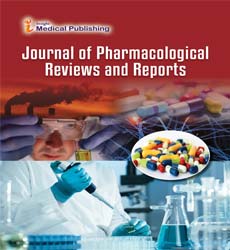Toxicity of Caffeine
Rebecca Arvier*
Department of Pharmacology, Karolinska Institute, Solna, Sweden
- *Corresponding Author:
- Rebecca Arvier
Department of Pharmacology
Karolinska Institute
Solna, Sweden
E-mail: rebeccarvier@gmail.com
Received Date: December 3, 2021; Accepted Date: December 17, 2021; Published Date: December 24, 2021
Citation: Arvier R (2021) Toxicity of Caffeine. J Pharmacol Rev Rep Vol.4 No.3:009.
Description
Caffeine (1, 3, 7-trimethylxanthine) is the most commonly consumed stimulant in the world included in medicines, coffee, tea, soft drinks and chocolate. Because of caffeine overdoses, whether intentional or unintentional, is relatively common in the United States, so doctors and other healthcare professionals can properly identify and manage caffeine and it is necessary to understand the toxicity of caffeine.
Signs and symptoms
If acute caffeine intake is suspected, the medical history should take into account are
• Taking prescription or over-the-counter (OTC) medications
• Use of illegal drugs
• Recent caffeine intake or recent behavior compatible with such intake Overdose of caffeine over a long period of time causes certain toxidromes (caffeine addiction).
It mainly consists of the following features:
• Central Nervous System (CNS)-Headache, drowsiness, anxiety, agitation, tremors, tingling around the mouth and limbs, confusion, psychosis, seizures
• Cardiovascular system-palpitations or heartbeat, chest pain
• Gastrointestinal (GI)-nausea and vomiting, abdominal pain, diarrhea, bowel incontinence, loss of appetite.
CNS findings on physical examination include:
• Anxiety, agitation
• Shivering
• Seizures
• Clouding of consciousness
• Head, eyes, ears, nose and throat findings
• Dilated but light-responsive pupil
Cardiovascular findings on physical examination include:
• Dilated pulse pressure
• Sinus tachycardia, arrhythmia
• Low blood pressure
• Tachypnea
GI findings on physical examination include:
• vomiting
• stomach ache
• Overactive bowel sounds
Diagnose
Laboratory tests are not indicated for hemodynamically stable patients with mild signs and a clear history of caffeine intake. Laboratory tests are indicated for patients with moderate to severe symptoms of caffeine toxicity. The following investigations will help.
• Complete blood count (CBC)
• Serum electrolyte, glucose, blood urea nitrogen (BUN), and creatinine levels
• Regular screening for other potentially treatable toxins
• Total creatine kinase (CK) concentration
• Dipstick urinalysis
• Rapid drug test in urine
• Serum ethanol concentration and osmolality (if intake is unknown or if simultaneous intake is suspected)
• Serum pregnancy test
• Thyroid study
• Arterial blood gas analysis
Hemodynamically stable patients with only mild signs do not require diagnostic imaging. The following studies may be considered under special circumstances.
• Chest x-ray-Patients with chest pain, fever, mental status changes, or dyspnea
• Unamplified Computed Tomography (CT) of the Head-Patients whose mental state has changed despite a seizure or initial resuscitation Patients with chest pain, palpitation, tachycardia, or arrhythmia should be evaluated by electrocardiography (ECG) and telemetry monitoring.
Management
Preclinical care is primarily supportive and in most cases resolves. Emergency management in more serious cases includes:
• ABC (airway, breathing, circulation)
• Treatment of hypotension
• Correction of arrhythmia
• Treatment of seizures (with benzodiazepines or barbiturates)
• Correction of metabolic disorders (hypokalemia, rhabdomyolysis, hyperglycemia, metabolic acidosis)
• Treatment of persistent vomiting
• Decontamination with activated carbon, sorbitol, or both
• In rare severe cases, hemoperfusion or hemodialysis
The consultation may include a local toxicology control center, a medical toxicologist, or a psychiatrist (after the patient is medically stable). Medically unstable patients are admitted to the appropriate level of care depending on their clinical appearance. Drug overview Goals of drug therapy interventions for caffeine toxicity include:
1. Stabilization of heart rate and blood pressure.
2. Seizure suppression with benzodiazepines;
3. Decontamination with activated charcoal, sorbitol, or both.
4. Correction of electrolyte imbalance. Depending on the rhythm disorder, tachyarrhythmias can be treated with calcium channel blockers or beta blockers (recommended) to control the frequency or with antiarrhythmic drugs.
Open Access Journals
- Aquaculture & Veterinary Science
- Chemistry & Chemical Sciences
- Clinical Sciences
- Engineering
- General Science
- Genetics & Molecular Biology
- Health Care & Nursing
- Immunology & Microbiology
- Materials Science
- Mathematics & Physics
- Medical Sciences
- Neurology & Psychiatry
- Oncology & Cancer Science
- Pharmaceutical Sciences
